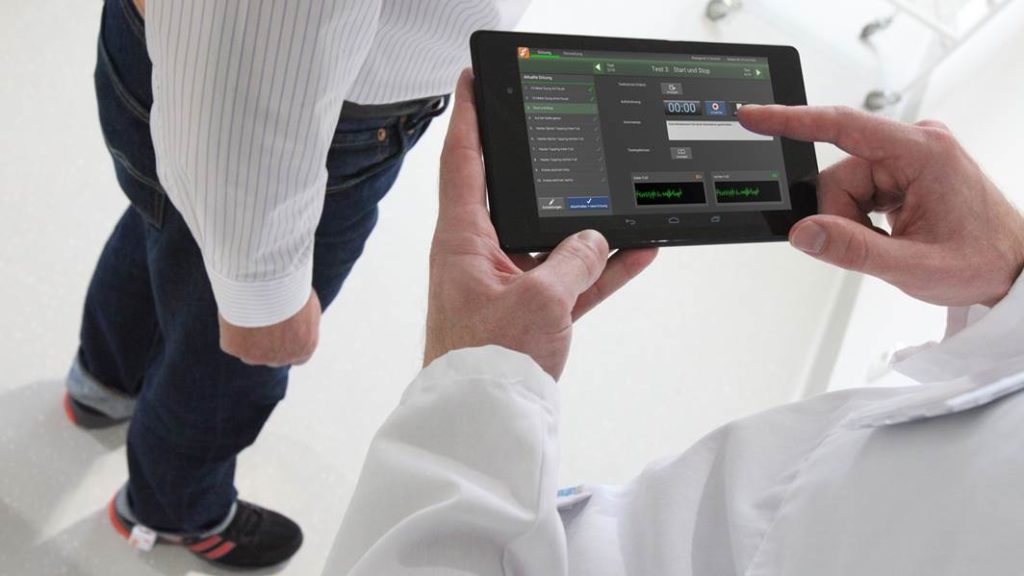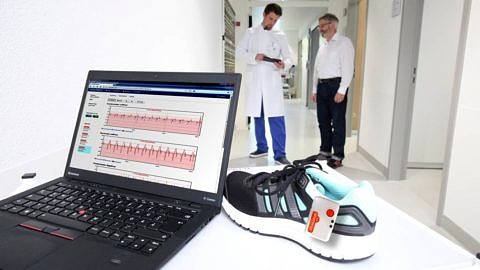The FAU Open Research Challenge returns
2017 challenge focuses on medical engineering to help treat movement disorders
In spring 2017, Germany’s Friedrich-Alexander University Erlangen-Nürnberg (FAU) invites researchers in medicine and engineering from around the world to enter the second FAU Open Research Challenge. The global online contest this year focuses on FAU’s major research area of Health Technology and medical engineering. The winner will receive access to a three-month trial at their home location (or other if appropriate) using the new eGaIT mobile sensor based gait analysis system, developed by a FAU consortium in Germany’s Medical Valley innovation hub.
Titled IMAGINE (Innovative Medical Application on Gait using Intelligent Engineering), the challenge asks engineers, doctors and teams including a doctor and an engineer to submit a proposed research project that uses the eGaIT prototype. The system provides objective gait parameters that have the potential to be used for diagnostic application and individual therapy monitoring for patients with movement disorders such as Parkinson’s disease.
The proposed research project should address patients’ need – to be measured with eGaIT – generating an algorithmic solution. In other words, if you are a doctor, how would you integrate the system into your research? Define a clinical research question. If you are an engineer, how would you generate algorithms for clinical use? Define a novel algorithmic solution.
The best 3 proposals will be invited to a week-long stay at FAU
The proposals will be judged by a panel of experts. The best 3 proposals will be invited to a week-long stay at FAU to present their concept and to meet the local researchers. Thereafter, the overall winner will be selected. During their stay, the contestants will be welcome to visit relevant research groups and laboratories at FAU, discuss their projects, explore possibilities for future collaboration or career development, and get to know the cultural and culinary highlights of Germany and Bavaria.
 More information about the FAU Open Research Challenge including deadlines will be published on www.openresearchchallenge.org in the coming weeks.
More information about the FAU Open Research Challenge including deadlines will be published on www.openresearchchallenge.org in the coming weeks.
About eGaIT
Within the emerging field of health technology, sensor-based movement analysis systems are about to reach clinical applicability. Numerous studies address the technical development of motion sensors to objectively assess motor symptoms in movement disorders. However, the clinical usefulness in diagnostics and therapy of the computed instrumented parameters has not yet been shown for these technologies.
Gait impairment is the major characteristic of many musculoskeletal or neurologic movement diseases such as osteoarthrosis or Parkinson’s disease. The ability to walk substantially limits the patient’s quality of life and the characteristics are frequently used to clinically rate staging and progression of movement disorders. Nevertheless, the clinical gait assessment is rather descriptive and heavily depends on the rater’s personal experience. The cyclic nature and unique biomechanic patterns of gait make it the most suitable movement for automated instrumented assessment.
An interdisciplinary consortium of medical, technological and engineering expertise at FAU has developed a mobile sensor based gait analysis system (eGaIT) providing objective gait parameters for diagnostical application and individual therapy monitoring in movement disorders. Thereby, the eGaIT system allows an objective rater-independent and individualized assessment of motor symptoms using inertial sensors (accelerometer, gyroscope) and machine learning methods.

eGaIT consists of three elements:
- A customized shoe with laterally attached inertial sensors (Shimmer Sensing). The sensors collect gait data, which are wirelessly (Bluetooth) transferred to a tablet with installed gait recording software and machine learning analysis framework.
- The gait recording software offers a variety of standardized movement test sets, which can be selected by the therapist. As the core of our system, a specifically designed analysis framework provides the clinician instantly with validated gait parameters such as stride length, gait speed, foot clearance, heel strike, toe off, swing and stance phases, etc. Moreover, it provides the basis for machine learning of gait signatures characteristic for specific motor symptoms or diagnoses of movement disorders using large amounts of gait sensor data.
- The data and analysis results can be wirelessly transmitted to a secure online cloud platform, so that therapists get a full overview of all gait parameters for the individual longitudinal monitoring of their patients. Furthermore the platform is designed for multicenter applications, enabling both integration of standard care units and multicenter study support.
